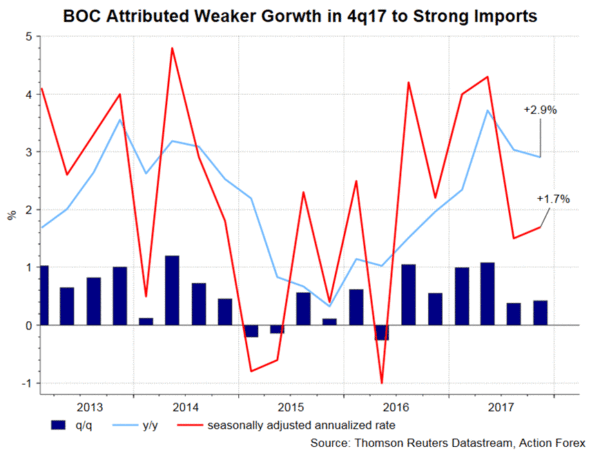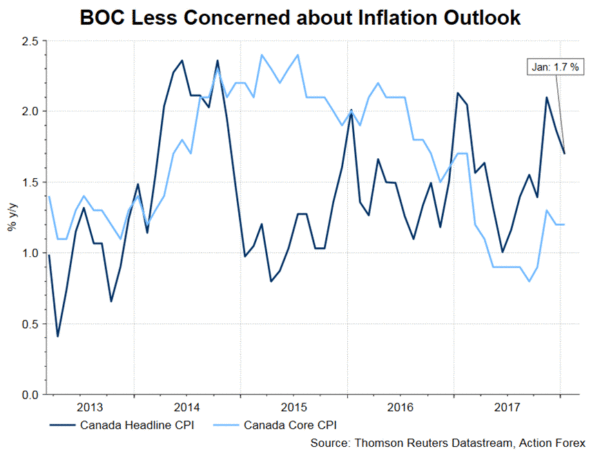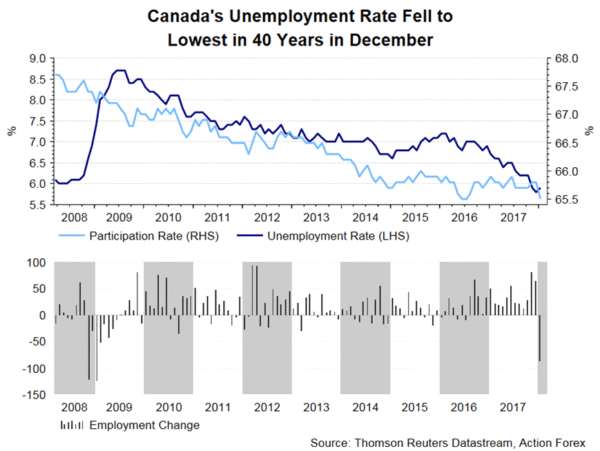As widely anticipated, BOC left the policy rate unchanged at 1.25% in March. The accompanying statement was more cautious than the previous one, over the trade outlook. Policymakers suggested that ‘trade policy developments are an important and growing source of uncertainty for the global and Canadian outlooks’, in addition to reiteration of the need for remaining ‘cautious in considering future policy adjustments’. Expectations of another rate hike in April diminished after the announcement.
On economic developments, the central bank acknowledged slower than expected GDP growth in 4Q17, attributing it to ‘higher imports, while exports made only a partial recovery from their third-quarter decline’. It noted that ‘the gain in imports mainly reflected stronger business investment, which adds to the economy’s capacity. It, however, downplayed the fact that consumption growth weakened during the period. BOC also suggested that housing data in late-2017 signaled ‘some pulling forward of demand’ and pledged to continue monitoring the ‘economy’s sensitivity to higher interest rates’.
On the job market, BOC noted that ‘wage growth has firmed, but remains lower than would be typical in an economy with no labour market slack’. In Janaury, the central bank acknowledged that wages have ‘picked up but are rising by less than would be typical in the absence of labour market slack’. The apparent more upbeat wage growth outlook was accompanied with a modest upgrade on the inflation assessment on which the central bank indicated that the increase in both the headline and core readings have been ‘consistent with an economy operating near capacity’. In January, it noted that inflation was moving ‘consistent with diminishing slack in the economy’. This implied that most of the slack in the economy has been absorbed and the effect would gradually reflect on growth of wage and price levels.
However, BOC was obviously more cautious over the foreign trade outlook. As noted in the statement, ‘trade policy developments are an important and growing source of uncertainty for the global and Canadian outlooks’. The concern has been increased, compared with the prior reference that that ‘uncertainty surrounding the future of the North American Free Trade Agreement is clouding the economic outlook’.
In the concluding paragraph, the central bank repeated its monetary stance, suggesting that it ‘will remain cautious in considering future policy adjustments, guided by incoming data in assessing the economy’s sensitivity to interest rates, the evolution of economic capacity, and the dynamics of both wage growth and inflation’. Indeed, whether a rate hike would be adopted in April depends on incoming data, NAFTA negotiations as well as the likelihood of and US-induced trade war.















